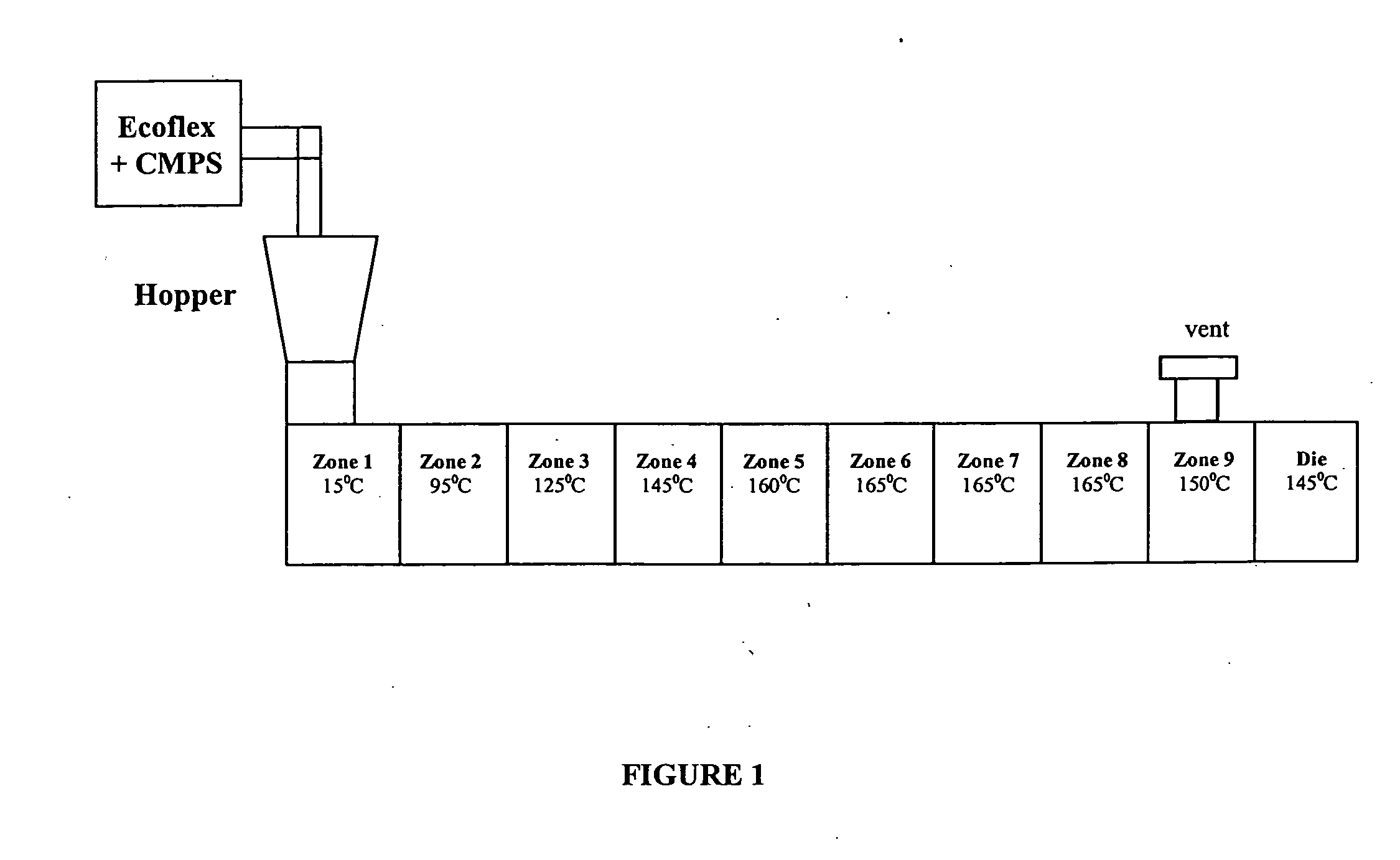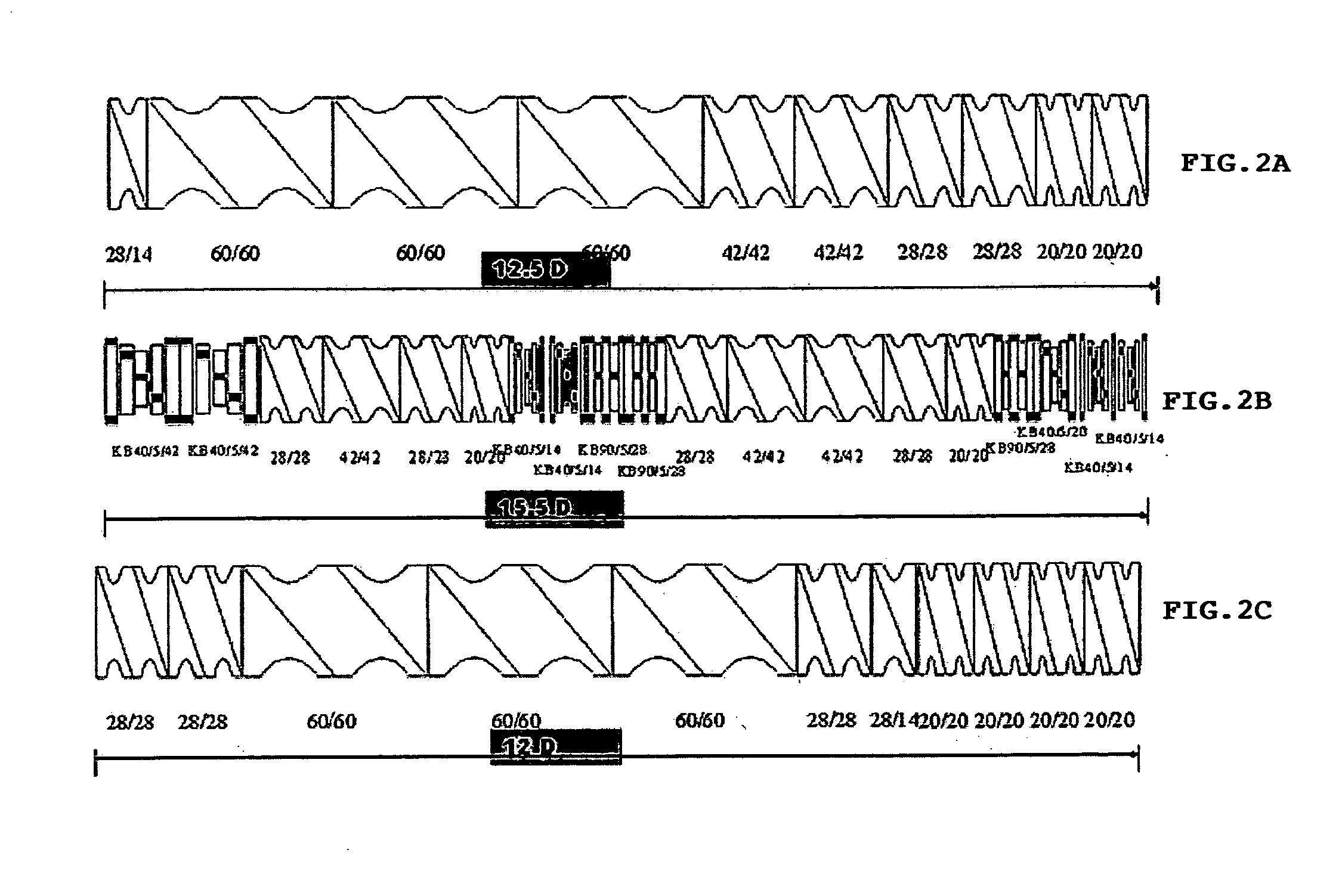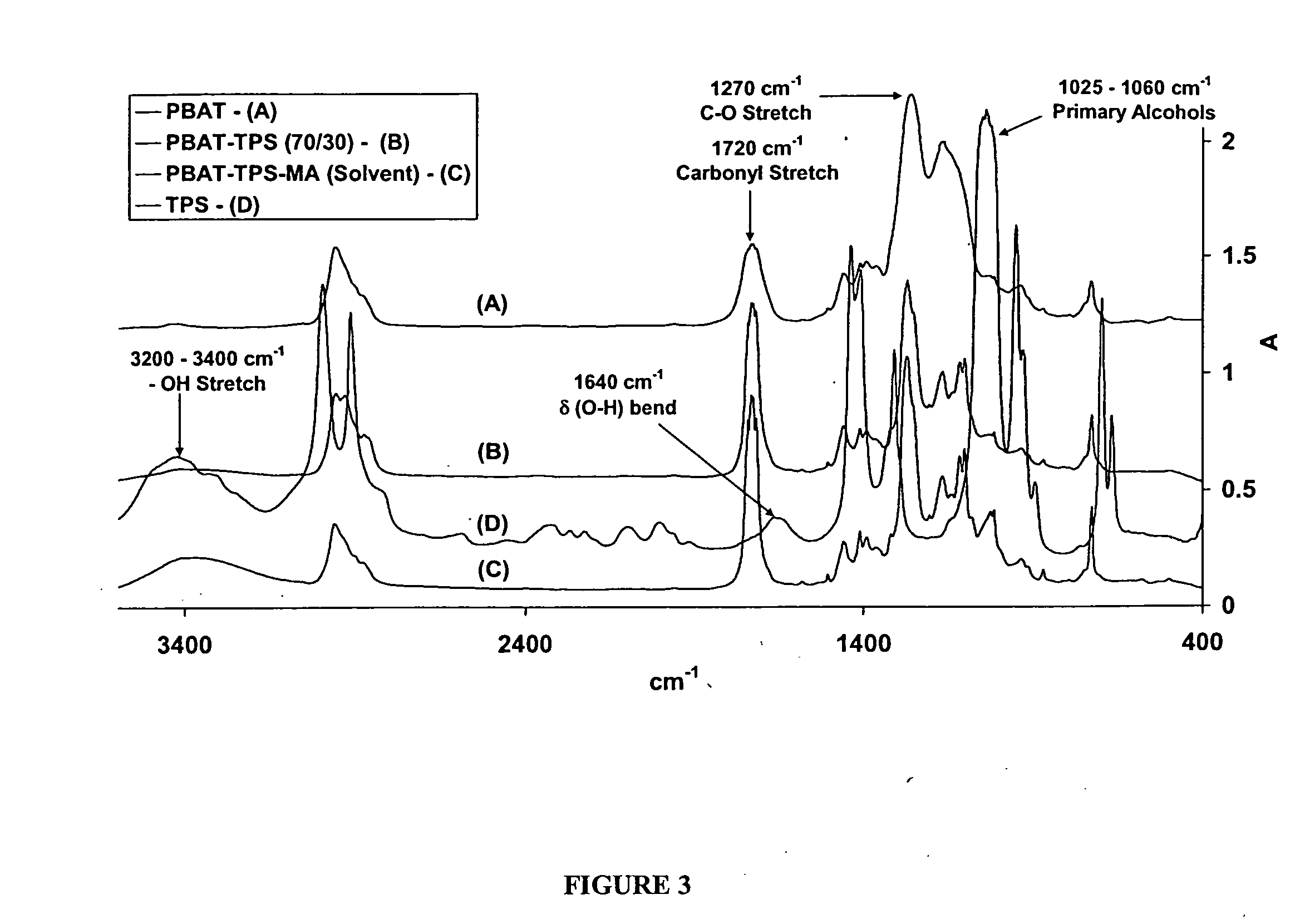Starch-polyester biodegradable graft copolymers and a method of preparation thereof
a technology of starch polymer and graft, which is applied in the field of starch polymer graft copolymer, can solve the problems of unsuitable thermoplastic applications, unsuitable disposal in soil or composting operations, and major disposal problems of companies and municipalities, and achieves enhanced properties and processability, good elongation, and good elongation. , the effect of compressibility and surface properties
- Summary
- Abstract
- Description
- Claims
- Application Information
AI Technical Summary
Benefits of technology
Problems solved by technology
Method used
Image
Examples
example 1
[0052] The synthesis of ECOFLEX™(PBAT)—plasticized starch (PS) graft copolymers was accomplished in a twin-screw co-rotating CENTURY extruder using maleic acid as a trans-esterification catalyst. PS was produced by plasticization of regular corn-starch, obtained from Corn Products, Inc. (Chicago, Ill.) (moisture content of 12%) using glycerol (20-wt %) as a plasticizer in the same extruder. Maleic acid, obtained from Aldrich, was ground to a fine powder using a mortar and pestle and pre-blended with the ECOFLEX™ polyester (poly (butylene adipate-co-terephthalate)), obtained from BASF (Germany)) before being fed to the feed port of the extruder. The concentration of maleic acid used was 1-wt % with respect to the total concentration. Meanwhile, PS, previously oven dried overnight at 50° C., was ground to a fine powder and fed using an external feeder to the feed port of the extruder. The feeder rates were adjusted accordingly to obtain a ratio of 70:30 (ECOFLEX™+Maleic acid): PS. The...
example 2
[0054] The procedure of Example 1 was followed using PCL™ (Poly (epsilon-caprolactone), obtained from Dow Chemical (Midland, Mich.); Molecular weight of 70,000 g / mol) polyester instead of ECOFLEX™. The resulting pellets were also dried in an oven overnight at 75° C. The pellets were totally extracted in Dichloro methane using a Soxhlet extraction unit. The extracted graft copolymer solution was cast to form transparent films. FTIR analysis of the films confirmed reactivity and the true existence of a graft copolymer.
example 3
[0055] The synthesis of starch-polyester graft copolymers was carried out as follows: Chemically modified plasticized starch (CMPS), produced by reactive extrusion processing of regular corn-starch, obtained from Corn Products (Chicago, Ill.), using maleic acid modifier, and glycerol (20-wt %) plasticizer as explained in the co-pending patent application was oven dried overnight at 75° C. and ground to a fine powder and fed using an external feeder to the feed port of the extruder. This composition is described in Applicants' co-pending application which is incorporated herein by reference. ECOFLEX™ was also fed to the feed port of the extruder using CENTURY™ feeder (Traverse City, Mich.). The feeder rates were adjusted accordingly to obtain a ratio of 70:30 (ECOFLEX: CMPS). The temperature profile and the screw configuration used are similar to Example 1. The vent port was kept open to remove unreacted maleic acid and water. The extruded strand was cooled using a water bath and pel...
PUM
| Property | Measurement | Unit |
|---|---|---|
| temperature | aaaaa | aaaaa |
| temperature | aaaaa | aaaaa |
| diameter | aaaaa | aaaaa |
Abstract
Description
Claims
Application Information
 Login to View More
Login to View More - R&D
- Intellectual Property
- Life Sciences
- Materials
- Tech Scout
- Unparalleled Data Quality
- Higher Quality Content
- 60% Fewer Hallucinations
Browse by: Latest US Patents, China's latest patents, Technical Efficacy Thesaurus, Application Domain, Technology Topic, Popular Technical Reports.
© 2025 PatSnap. All rights reserved.Legal|Privacy policy|Modern Slavery Act Transparency Statement|Sitemap|About US| Contact US: help@patsnap.com



